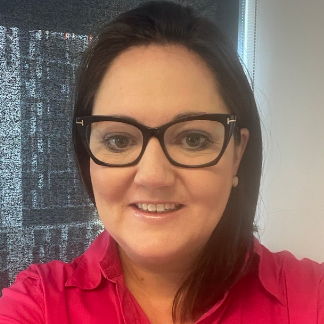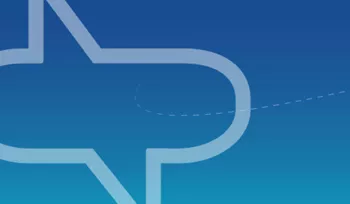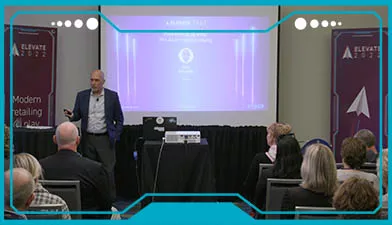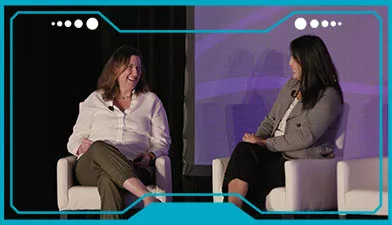On demand | Elevate 2022
The airlines mastering their merchandising game
PANEL • MERCHANDISING
A key element of effective retailing is merchandising your products—how you effectively present your offer for optimal revenue and customer satisfaction. All the moving pieces can make modernizing your merchandising seem overwhelming, but our panel of experts from across the industry have some cheat codes to share.
Chris: Good afternoon, everybody. Welcome back. Thanks for your patience while John made me look foolish on stage. I apologize. I'm out of breath. This is almost like when you're working from home and the boss calls and you gotta quickly shut the Xbox off and then pretend like you've been working the whole time. I feel like that's what I just went through.
So thank you again for being here. I hope you enjoyed that. This might have been the premiere, if you hadn't seen it already, of our new Routehappy infomercial.
We're going to pick up some of the conversations that we've had earlier today on what Alex and Tom talked about around presenting the offer and what Ellen and Connie talked about and the great work Expedia is doing in the merchandising of airline content. I will catch my breath, I promise.
So. Just to set the stage, the focus of our discussion for the next 40 minutes or so is really about presenting the offer, or what we like to call merchandising the airline offer. The reason that's important is that there's a significant amount of investment by airlines, technology companies goes into the first two steps, creating the offer and distributing the offer. That's table stakes for any airline to really compete and optimize their revenue. The challenge for much of the industry is that the presenting the offer is often the last thing that gets thought about or gets left behind. So we're going to talk today to some industry experts who are really setting the tone on how to optimize that and get the last remaining dollars out of the shopping basket regardless of where customers are shopping for their content.
I want to highlight two headlines as part of the conversation, to reiterate how important this is and how important your leaders at the airlines think this is. Robin Hayes, the CEO of JetBlue, recently presented the idea. The IATA AGM chairs report, which is a summary of what the airline CEOs believe are the priorities for the industry. And one of those priorities this year was about true airline retailing. That means that travelers are able to see the value of what is being offered by the airline beyond the base fare, regardless of channel. They want to unlock the value of all the investments they're making in products, travel, experiences, aircraft, by putting the customer first. So airline CEOs have said this is a mandate, we've got to solve this.
The second point that we want to highlight is a recent report by McKinsey. It's called the six secrets of profitable airlines. And the one thing they highlighted is one thing we've always known―customers are no longer buying tickets based on price and schedule. Those days are over. So having developed a quality product, the next step that the most profitable airlines are taking is getting passengers excited about the journey in the shopping path. We're going to talk about how that's working out for airlines who are optimizing that today.
One of the channel partners that we work with is TripActions. TripActions has introduced the ATPCO Routehappy solution, and when they started presenting rich content in the purchase path versus the legacy commoditized displays of schedules and price, they saw a 35% increase in premium bookings. So what that means is people that were looking at a basic fare, they saw 35% more of those consumers buy up to a main cabin type fare. Significant dollars that are often lost by airlines when they're not effectively merchandising their products.
ATPCO recently held a survey of global airline travelers to see if we could get other perspectives on how customers behave in the shopping path. And what we found was that 80% of shoppers are more likely to book when they see targeted visuals. So beyond basic commoditized content, 80% of them want to see more about their travel experience, so they have more control over what they're buying. 63% of the people we surveyed prefer to see images of the actual travel experience on board. So customize imagery to the plane that they're on, to the type of seat that they're in. Customers are voting with their pocketbooks and when they see this imagery, they can better understand what they're buying. The conversion rates are higher.
So we know where we've been. We'd like to say green screen. This one's blue, but this is where we started. We've shifted from the legacy ways of selling airline tickets. We're less and less B to B, we're more B to C. And what we're seeing is airlines working very hard to decommoditize what they offer to the marketplace. And they're improving their displays with rich visual content that lets the consumer decide how they want to invest in their trip. And the airlines that are doing that, we hear on a continuous basis, is they're seeing better performance when they do it versus when they don't.
The challenge that we have is still limited adoption in the marketplace. We've still got a lot of airlines who have not quite solved the omni-channel merchandising opportunity. And there's opportunities for them to capitalize on additional revenue in each transaction, higher conversion rates, higher customer satisfaction, higher margins.
So what we're going to do over the next few minutes is share some feedback from an industry expert who works with many airlines and other industries on what best-in-class merchandising results they've seen. And then we're going to bring up the panel to have a discussion about it.
So right now, I'd like to introduce Alex May from Movable Ink to share some of the experiences he and Movable Ink have had in our space.
Alex: Thank you. Hey, y'all. I'm Alex May, associate director of client strategy at Movable Ink, specifically over our travel and hospitality verticals based in Dallas, Texas. So you're going to hear y'all a lot for me today. So apologies in advance, but yeah, I'm here to talk about the importance of personalized visual content and merchandising.
So why is visual content so important, right? Well, I've got a few statistics here to kind of lay the foundation for that. The first one is that the brain processes images 60,000 times faster than it does text. Additionally, consumers who are shown visual content are having a 650% higher engagement rate with this visual content versus text.
And then also, 61% of customers are more likely to buy or book from you if you're serving up personalized visual content. So again, you know, we're visual beings as humans, it's kind of our superpower. And when we can deliver on that and help our customers by presenting visual aspects that help them see the value in what they're searching for and help them curate the experience they want, it's going to drive value from them, but also for us as well.
Before I jump into some examples for some of the clients who work with Movable Ink, kind of want to set this up with this quote and kind of leave it here. It's from Leo Burnett, who's the founder of Leo Burnett, a large advertising agency in Chicago. You might know them from, they developed Tony the Tiger, the Marlboro Man and, if there are any United folks in the house, he coined the term “fly the friendly skies.” But the quote is, “what helps people, helps business.” I've worked in retail, fast food, travel, hospitality, and it really rings true for any vertical or any industry, but for us delivering that visual merchandising and really helping our customers find what they need quickly and easily when all the value for them and have them come back to you more and more, it'll deliver value for you as well.
All right, so I'm going to dive into a couple of examples, specifically with Frontier Airlines. These are campaigns we worked on with them at Movable Ink. This first one here is where we were able to enable Frontier to display inspirational and visual content paired with merchandising, the lowest fares based on a customer's preferences, location, buying behaviors, things like that.
You can see on the left there's an example for someone who lives in Denver, Colorado maybe it's January. I'm actually from Colorado, so I can relate to the fact that in January I would do anything to go to the beach. So we're going to display that personalized visual content based on their preferences that they booked in the past and their location, and pair that with the merchandising at the lowest fare from DIA.
On the right, it's kind of the opposite. Maybe someone in Miami in February, don't know why you want to leave the beach in February, but maybe you want to hit the slopes. So we've got the snowboarding image and again pairing it with the lowest fare from their airport and also showing some other visuals below for some other mountain destinations. And it may seem simple, right? Just showing this simple content, but it drove amazing results. There was a 99% lift in revenue for this campaign, or conversion, excuse me, and a 40% lift in click- through rate. So again, you can drive some meaningful results by simply showing simple visuals that are relevant and will connect with your customers.
And then finally, I have this example here where we implemented a live seating map for a campaign where Frontier wanted to drive ancillary revenue and upsell their customers to upgraded seats with more legroom. Now of course everyone knows the value of extra legroom, so it's pretty straightforward, but by implementing this seat map, it really helps drive the customer experience. I'm someone who may not want the extra legroom if I have to be in, I don't want to be in a middle seat. But by looking at this map, I can see, oh, actually there's some aisle seats, there's some window seats available and they're actually pretty far up in the aircraft. So I'll be able to deplane faster as well. So this is a no-brainer for me. You've made it simple. I already know what seat I want. I'm going to click through and book that seat. And you can see there, this campaign drove $1,000,000 in incremental revenue and a 4.2% lift and click-through rate. So again, simple visual, very compelling results.
And then I'll go with some key takeaways before we jump into the panel. The first one is relevant and visual content will allow customers to process information quickly and boost engagement levels. Second, personalized experiences paired with compelling visual merchandising will be key when trying to convert your customers. And then finally, realizing meaningful visuals to convey ancillary experiences and value will help set your brand apart when you're competing for share of wallet. Thank you.
And I know we'll pass it over to Chris, and jump in the panel.
Chris: Thank you very much, Alex. Thank you. So great feedback. Movable Ink has done extensive research on digital merchandising across multiple industries. They're doing some great work in the airline space now, demonstrating the types of benefits airlines can generate from using it, so that the information expertise is really helpful.
I'm excited to introduce the panel now. We've got three exceptional industry merchandisers. The reason they're exceptional is they're not just thought leaders for the industry, they're also leading the industry and moving forward in omni-channel merchandising. So we're very proud to introduce Tina Larson from Hawaiian Airlines, Marlotte Eichelsheim from Air France‒KLM, and Stacey Stokes from Virgin Australia. Welcome, everybody. Thank you for joining us today.
So just to give myself a few more minutes to catch my breath, maybe I'm going to volunteer Stacey to give us some initial thoughts and reactions to what you've heard from the first two presentations on our panel.
Stacey: Yeah, absolutely. I think the one thing that resonated with me was getting people excited during the booking process. So I'm fortunate today or tonight to be staying in my room that actually overlooks the airport. And do you know how long I've stood there just watching these planes take off? And it gets that real excitement and feeling that I have when I get on a plane and you start to hear those engines roar. And imagine someone booking travel and through their booking experience, that's how they feel. And I'd love to be able to create something like that.
Chris: Any other thoughts or feedback on what you heard already?
Tina: I mean, I think the numbers show that it works and it shows that being able to clearly display the value of your product, results in positive growth and this is something that the industry needs to be investing in.
Chris: Okay.
Marlotte: To add to that, I think was said in the McKinsey interview, customers aren't looking for price and schedule anymore, but if we look generally when we're booking travel, it is what we see. So there's really a shift needed, I think, to respond to the customer need. And what they're looking for is the value and indeed that product, that experience. So really showing that value, I think that's what we need to head to with the industry.
Chris: Great points. I think it ties very nicely to what Connie mentioned earlier about how they're testing how that content plays out with the consumer and from the, at least the early things that she shared today, that their results seem to reflect some of the things that we heard earlier in the presentation.
Tina, I'm going to start with you and ask a question about the unique challenge Hawaiian airline has. You have the luxury of being hubbed in one of the best destinations of the world. Unfortunately, it's a very small local market that has to create some unique selling and merchandising opportunities as you're trying to draw traffic away from other airlines' home markets. How does Hawaiian Airlines think about that?
Tina: Yes, I think Hawaiian has strong brand presence, up and down the West Coast of mainland United States. The further that you get away from it, I think that lessens. I don't think people realize we fly to JFK, we fly to Boston. I think it's also compounded internationally, especially when we're up against the foreign flag carriers. So I think our direct team does a great job of showcasing not only the beauty of Hawaii, but also the value of our products.
In the indirect channel, I think we sometimes lose control of it and that's where for us, our partnership with Routehappy has been extremely helpful because we're able to replicate what we do on hawaiianairlines.com in the indirect channel so that travel agencies who may never have flown on Hawaiian, well, first off, they know where we fly and then secondly, they'll be able to look at this rich content. They'll be able to see the inside of our beautiful aircraft, they'll be able to see the fact that we serve free meals on all of our flights to the mainland plus international in all cabins. They'll see that one thing that could be of value is on all of our wide body aircraft, that's a lie-flat seat and that's from out of the West Coast of the United States, which could be something that really sets us apart and is a differentiator.
Chris: So, without that visual display, those consumers would never know the investments you've made and the differentiating products and services you're offering.
Tina: Yeah, and I think it goes a bit beyond, the 16 attributes of ATPCO. We can go a bit further and put in other things. You know, if reliability is something that's really important to a customer, we can use messaging to tell that we have for 18 years been the number one on-time US carrier. That might be something that really sets us apart.
Chris: Very good. Thank you for sharing that. One thing I did forget to mention that for those of you in this Slido app, you are able to submit questions to the panel and we'll be taking a look and and getting to those later in the discussion. So feel free to submit those.
Marlotte, let me turn to you and some of the work that Air France and KLM have been doing. You're running two brands, you've got two very different website experiences based on the local markets that you compete in. Can you tell us what you've learned from the advancement of your direct channel websites and how you've been applying that for the indirect channels?
Marlotte: Yeah, absolutely. So as I mentioned earlier, the customers are really looking for value and for choice. And this is something that recently in recent years we've been trying to do that more and more on our direct channels. So definitely not saying we're there yet, but we've come a long way to really offer a richer customer experience.
So we're doing that in our direct channels, but as with most airlines, I suppose, the majority of sales still happen through indirect channels. So while we we've been focusing on the direct channel, I think it's equally important to also engage with our industry partners to also do the same thing in indirect channels, and this is last year we started retailing program at Air France and KLM where we really have to focus on working together with our partners and going from the GDS to a local OTA to the corporate site to really enhance their booking tools as well. So we look at our website and we're still on the journey as well.
So we want to take everybody along on this journey and share our best practices, share examples. So we've created guidelines in which we tried to open up the conversation with the agents can do as well to create a richer travel experience.
Chris: Yeah, we've seen some of the information you've shared with the industry and it's very progressive ideas that helped shape the type of merchandising that you're talking about. Can you share anything about what the reception's been? I know that the GDSs have been a participant in this and some of your major trade partners. What's the initial reaction been?
Marlotte: The initial reaction is everybody sees this is the way forward, but it does take a lot of development. If you look at where we're coming from, I think on the slide earlier where you see just the price and schedule going through a super rich experience through the TripActions example, it's a big, it's a long way. So I think everybody I've spoken to sees this as a way forward. Everybody's enthusiastic to go this way, but it does take time and I think we must not forget that if we don't see the results immediately, it doesn't mean we're not booking any successes. So it's a long road. We're on it, but it's important. We're all from management teams also creating more and more offers, think ancillary sales, offering even more choices to the customer. It's also very important. But when we offer, when we create new offers, we must make sure we reach the customer with that. So I think a long way to go, but I think everybody is at least, the faces are headed the same direction. So it's a good start. The journey has begun.
Chris: That's excellent. Stacey, I've got two questions for you. The first one is about how Virgin Australia thinks about investing in new products and services and then transitions that to how you take it to the marketplace. Can you tell us a little bit about that process within Virgin Australia?
Stacey: So at Virgin Australia, we are proudly in the middle when we talk about our brand and our market and the products that we offer. We have a strong brand presence as well in the Australian market and a customer value proposition that does talk about value and choice. So similar things to what Marlotte was talking about as well as service.
Being in the middle does give us some challenges though, because it means that we need to be able to have our low-end leading price, but then be able to build bundles or value propositions for the customers who want to have a different experience. But then also provide premium products at the top end. So that middle place does create those challenges for us. We do have a great booking engine at the moment and as well as our indirect channel too.
But what we're doing at Virgin Australia at the moment is really exciting. We're actually investing in a new merchandising engine. We're going to jump into the NDC game as well as update our IBE with our partnership with Datalex. So we've got a lot of rethinking to do in terms of how we actually, right now, visualize our offers to our guests in both of our channels and we've got a really exciting space to be in because we're in that build phase right now.
Chris: Thank you, Stacey. I want to come back to the question that I had asked to Tina about her market conditions. You're the reverse. You've got a huge local market and you're also in a very competitive market where merchandising is the way all airlines compete, merchandise is very prevalent in Australia. What does that mean for the Virgin Australia merchandising efforts?
Stacey: Yeah, for us I think coming back to that value and choice for our customers, but not over complicating it, right? This stuff is hard and sometimes we don't get it right. So we're invested or leaning into our test and learn program which allows us to either succeed or fail. And I think the great the opportunity that we have is to actually fail because you learn so much from failing, as you do when you when you're succeed in that test and learn environment. And we have the very similar, in the market, very similar offers there. So we've got to figure out a way for us to get our customers excited.
Chris: Alex, you've heard some examples of how the airlines think about home and away markets, how they're introducing things they've learned on their direct channels into the indirect channels based on Movable Ink's experience, whether it's with the airlines or in other verticals that that you look in, any reactions to best practices that we're exhibiting or opportunities for airlines to bridge that merchandising gap?
Alex: Yeah, absolutely. I mean, to me, the bridge is the customer experience. Anyone can deliver lowest prices possible, different destination times. But not everyone can deliver additional value in the sense that I think there's a lot of different ways to go about elevating the customer experience. I think the one that I tend to lean towards the most right now that's being more innovative is that attribute- based searches. Expedia mentioned it today, they've had a lot of success. A lot of OTAs are following suit and what we're seeing is coming out of the pandemic, we all know travelers are more flexible now, right? They're not as concerned about maybe the times that they're flying or when they're getting to a destination, it's more about the experience. We're seeing that with hotels a lot. But I think that's bleeding into the airline industry as well where people are more focused on the experience in-flight. They're not just looking to go A to B. And so being able to present them in a quick and easy way, the different attributes that they might be interested in, whether that's through personalization or whether you don't know the customer on your website and you're just presenting them the tools, anyways that they can build the experience they want is going to have them come back to you over and over again. So I think that's how I tend to look at it.
Chris: Thank you. Good coverage from other industries that we can apply to air travel. We have a question from the audience. I'll start by saying we thank you for the plug for Routehappy and Movable Ink has shared some great examples of what they've done with the industry, but the audience is interested to know what other technology providers or tools are you using to help in your offer presentation as you're thinking about omni-channel distribution? Or you can just say Routehappy does everything really well.
Tina: Routehappy does everything for us.
Alex: Yeah. I mean for me in terms of other technologies, I think CDPs are huge. I think that's an area that's tending to grow, helps you deliver the right message at the right time to the right person. And then of course, we focus on personalization within your ESP. So any way that you can deliver fare prices and enable that API to deliver those different prices to your different channels, whether that be direct e-mail, paid media, things like that. That's kind of what we tend to focus on or are seeing success with some of our clients.
Chris: Thank you very much. Any other thoughts? Routehappy was the right answer. Thank you, Tina, I'm going to come back to you. We talked a little bit earlier about how airlines make investments. Can you tell us a little bit about what the priorities are when Hawaiian is making investments? Are the primary goals financial, competitive, customer satisfaction, what comes into the mix for your airline?
Tina: With branded fares, we implemented that before the pandemic and a lot of that was a competitive response. With the mainland US, we had a lot of capacity coming into the Hawaiian market and our competitors had a basic economy product that we needed to compete with. Same thing with international markets. We had a lot of low cost carriers who had à la carte pricing that we had to compete, but also it was something that the customer wanted. With investments in our on-board product that goes to directly to the customer. Our promise is to deliver authentic Hawaiian hospitality. So what we invest in is so that we can deliver upon that promise. And so to be able to give our customers the experience that they value is something, the next time they come back to Hawaii, they'll come back to Hawaiian Airlines.
Chris: And what was the customer reaction when you introduced the branded fares and started offering the visualization of what kind of experience that they could select from?
Tina: It was basic economy, so they didn't get a seating assignment, but no, it was another choice for them and it was a successful launch that we had, something that we still have in the market, and it is just the first of many opportunities that we have available going forward.
Chris: There's a there's a famous CNBC interview by the CEO from Delta Air Lines when they introduced their version of branded fares, and they applied their merchandising tools to introduce the market. And if I get it right, I'm sure there's somebody from Delta who will correct me if I'm wrong, but 50% of the customers who were presented with the basic fare upgraded to main cabin, 50% and the average upsell is about $40 a person. And that was the spirit of merchandising. So that's the goal of the types of things that we're talking about today and the types of reactions. Consumers are saying that they'll make decisions with their wallet when we do that.
Tina: Absolutely. And for some people, Hawaii might be out of reach, so a basic economy product is something that makes it a bit more affordable, but for the other customer who is willing to pay for the extras, that's a great upsell opportunity for us.
Chris: Well, we're looking forward to supporting you on that journey. Marlotte, because of the nature of your network and the impacts of COVID on capacity, interline code sharing has become more important than ever to stretch the networks until things return to some sense of normal. Can you tell us a little bit about what Air France and KLM are doing to help improve the merchandising of those travel experiences for your customers?
Marlotte: Absolutely. I think first of all in code sharing and having agreements, I think communication is key. So communication from us as an airline to our customer but also along with our partners. So we share a common message. So within Air France‒KLM, we work together with our joint venture partners Delta and Virgin Atlantic, with whom we actually together created the display guidelines that we share with our indirect channels. So we make sure that we are fully aligned on what do we want, through what message do we want to bring out to the industry, and are we all sharing the same vision? But also on our direct channels, of course we share. We also sell other operated airlines. And I think the key is that we're transparent, so the customer knows what to expect, what experience am I going to get? And in some ways we have product strategies that are the same way so that that works perfectly well. But sometimes with the partner you have a diverging product strategy, that can happen. And that's not a problem, but as long as we communicate clearly to the customer what products are you purchasing and is that the value that you want? So that the customer doesn't get any surprises. I think communication is really key. And therefore we work nicely together with our partners.
Chris: I think that's an important driver of customer satisfaction, especially with those unique interline or code share transitions to help them understand what they need to do and when.
Marlotte: Yeah. It's not only customers, it's from the customer's perspective, of course we want to place the customer centric and make sure the customer has a great experience. But she also mentioned upsell. There's also what's in it for us as an airline? Of course we want to sell our high yielding products. So to make sure that we sell, we share them in an attractive way. But also the way we are published on our partner airlines websites, we also want to make sure that we are able to upsell. So I think it's a win-win for the customer and for us as an airline as well.
Chris: Thank you. Some great questions coming from the audience. I will not get to all of these unfortunately, but there's one here that asked how does merchandising fit into your NDC strategy? So for those who've got a foot in NDC right now, could you tell us a little bit about that?
Marlotte: Maybe to open it, the whole NDC, the subject is really about the back end being able to get the right content and that's very important. But how are you actually going to show that content? So within Air France and KLM we work closely together with the NDC team. And so through NDC, you can get the best offers, but you need to be able to display them in the right way and that's when you really want merchandising to come in. So I think it's very strongly related to each other.
Chris: Any other comments on that one.
Tina: So Hawaiian’s relatively new in our NDC journey; we just launched it this year, but we're really excited about the opportunities that we have that the GDSs haven't been able to provide in terms of merchandising. And we partner with Farelogix and we think that we have a very powerful merchandising manager. And so to be able to put forth bundles and new offers that the customer values is something we're really excited about.
Chris: So do you treat a traditional offer the same as an NDC when you think about merchandising, or is there a different perspective, or are they the same? So a traditional, a non-NDC offer that you would have done pre-NDC, when you are merchandising that in the third parties are they the same or do you do something different in terms of the visualization?
Tina: I would say that they're probably the same. I mean, it is the same product, it's just in different channels.
Chris: Same?
Marlotte: Yeah, I would say the same.
Chris: Okay.
Stacey: We're thinking that.
Chris: From a consumer standpoint, they really don't care where the offer came from. The point is, am I seeing what my experience is going to be like and do I have control over the experience?
There was a question about, as each airline, and this is for the airlines and for Alex, as you're working to extend your merchandising strategies outside your direct channels, how are you collaborating with GDSs, with OTAs and metasearch sites to achieve your mutual ambitions? What are those conversations like? What approaches are you finding most effective to achieve your goals?
Tina: Well, I'm really excited about the conversations that we've been having with the agencies. We're seeing positive conversations about our NDC, the product that we've put in the market, we're having great conversations around our distribution strategy and we're getting a lot of agencies converting to our NDC platform. That was very different conversation that we had before the pandemic and now it's entirely different. So it's been a great change for us and really when we talk to agencies, it's about the partnership, about opportunities to be better at merchandising, that's really exciting and it's just this true sense of what can we do differently together.
Stacey: We're hearing that as well. So the Australian market is really excited about what opportunities we have in terms of NDC and how we can create those different offers and visualize them differently. So we're looking forward to being able to roll it out next year and take some advantage.
Chris: Alex, anything?
Alex: I was going to say, I mean I tend to deal more with the direct side. I don't mingle too much with the partnerships between an airline and OTA. But I think the biggest thing is really to y'all's point, delivering a consistent experience across the different channels and it can be with your own channels as well, not necessarily third party channels. But certainly I think that's the biggest thing is delivering the consistent experience. And I will say, Hawaiian does do a fantastic job of displaying inspirational content for some of their packages and driving that ancillary revenue through excursions and things like that and making sure that you can take that beautiful content and those great messages. And having that translate on some of your other indirect channels is huge.
Chris: One last question from the audience. If ATPCO could do one thing for you tomorrow in your merchandising journey, what would it be?
Tina: I would say for NDC, let's combine Routehappy and HA Connect, which is our NDC platform, because I think there's a lot of opportunity there going forward.
Chris: All right, Doug, we're on that.
Marlotte: Yeah, I would say that with Routehappy is already a really nice integration helping visualize offers, which is critical. So I think just keep going the way it's going with, with Routehappy and integrations such as that, I think we as airlines really benefit from that.
Stacey: I'd like to see a little bit of VR in Routehappy, I think, like virtual reality and being able to walk onto the plane yourself. And you know maybe you've got good skills now, Chris.
Chris: All right, well I'm sure Darie will love to pursue the virtual reality so we'll add that to the list. Alex, I know we're somewhat new in working with Movable link. From what you've seen and heard over the last half day, anything jump out that we can do to help?
Alex: Yeah, absolutely, I think overall I just would love to continue to grow the partnership and just again, going back to the presentation, just figuring out how we pair that visualized merchandising with personalization to create that really compelling message to deliver to everyone's customers.
Chris: Well, thank you very much. So just to wrap up the panel, I think some of the things that we've heard today is that consumers react favorably when we put the right imagery where they're doing their shopping. Their satisfaction’s higher. They're willing to pay more to have control over their experience when it's done effectively.
We've got channel partners in the industry like Expedia who are doing some great experiments to figure out how to really optimize that, whether it's mobile or on the on the website. thinking about globalization, not just home market, how you work in your international markets, whether it's language or the local shopping customs is important.
How you work with partners in terms of aligning your messaging, helping the customer navigate what their travel experience may be like is important. In a market like Australia, which is well ahead of many other regions in terms of most of the airlines are heavily merchandising in all channels, ensuring your you're putting the best story forward is important.
Also appreciate the third party perspective that Movable Ink brought that they're seeing in other industries. They're testing it with partners today and they're seeing the types of results that effective merchandising can provide.
So thank you very much for sharing your stories. We're really honored to have you share what you've achieved so far. We're looking forward to supporting you along the way. Thank you very much.
Marlotte: Thank you.
An event experience you can't miss
ATPCO's Elevate + ARC's TravelConnect
Speakers

Tina Larson
Managing Director of Distribution, Sales Strategy & Alliances , Hawaiian Airlines
Tina is responsible for developing the global distribution strategy at Hawaiian Airlines and manages the commercial relationships with GDSs, OTAs, and other third-party content providers. Most recently, Tina has added the responsibility for developing the business relationships with codeshare and interline partners that help enable Hawaiian to expand its reach in domestic and international markets. Tina has over 20 years of experience in the travel industry and has held various key positions in operations, loyalty marketing, and revenue management at Northwest Airlines and Expedia. She holds a bachelor’s degree in communications from the University of North Dakota and a Juris Doctor degree from William Mitchell College of Law.

Chris Phillips
Vice President, Global Sales, ATPCO
Chris joined ATPCO in 2019. Leveraging more than 30 years of commercial airline and consulting experience, he assists ATPCO’s partners in achieving their financial objectives by optimizing their use of the ATPCO solution suite. His background in supporting effective commercial strategies along with his passion to de-commoditize the airline shopping experience complement the airline pricing and retail models enabled by ATPCO. Before joining ATPCO, Chris held leadership positions at Delta Air Lines and Four Corners Consulting Group.

Marlotte Eichelsheim
Retail Program Manager, Air France - KLM
As Retail Program Manager, Marlotte is responsible for retailing through indirect channels at Air France‒KLM. Marlotte is leading AFKL’s Retail Program, launched this year, in which AFKL engages with trade partners on a global scale to modernize retailing and transform the way airline products are offered. With a background in innovation, Marlotte is a true believer in the digital transformation the industry needs to go through to remain competitive. Marlotte kickstarted her career at Air France‒KLM in 2020, and with her fresh view, is determined to make change happen.

Stacey Stokes
Manager, Retailing Platforms, Virgin Australia
Stacey works to put the pieces of the puzzle together on how to deliver an optimized retailing experience. For Virgin Australia she is delivering the Next Generation Retailing Program. Stacey has more than 20 years’ experience in the travel industry in various roles spanning leisure, corporate, and airlines. She has worked to build and lead large onshore and offshore top-performing teams, delivering improved processes and efficiency, and understanding the interoperability of systems and commercial intention.

Alex May
Associate Director, Travel, Hospitality and Food Services , Movable Ink
Alex joins Movable Ink from the client -side, spending the past nine years in various marketing roles across a multitude of verticals focused on digital communications, CRM, and personalization. Most recently, at Neiman Marcus, he focused on test-and-learn programs to scale personalized, omnichannel customer experiences. He also led the strategy, implementation, and ongoing execution of Neiman’s personal shopper matching program. Alex is well-versed in the challenges of marketing and loyalty across the travel landscape and applies those learnings to develop innovative personalization strategies for ourMovable Ink’s Travel, Hospitality, and Food Services clients.
You might also like



